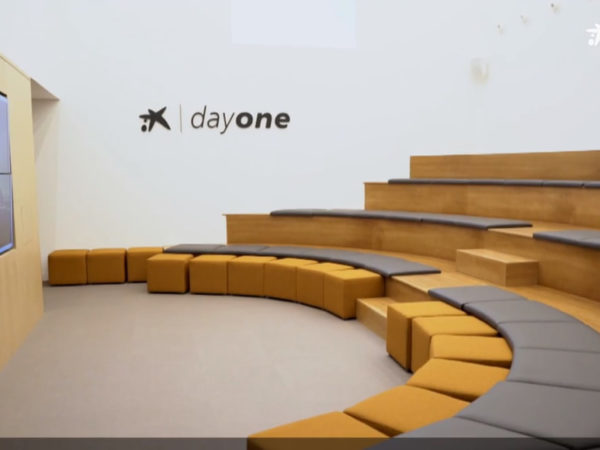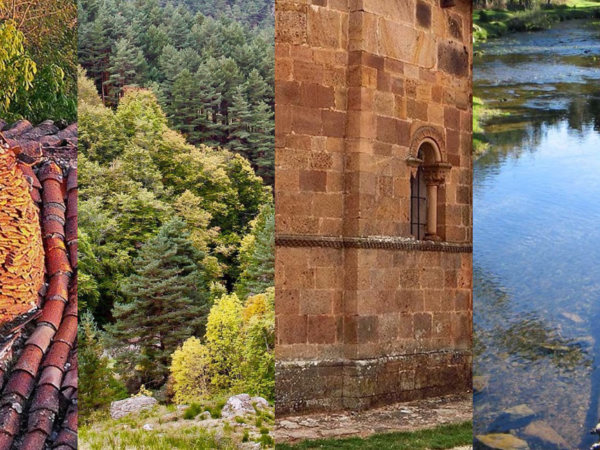Tallent for Challenge. Authors: Adolfo Castilla and José María González del Álamo
We continue to explain in this blog the various works carried out by Innovation Wars/CiBUC with its Collective Artificial Intelligence (CAI) methodology. In this post, we refer to the work called Tallent for Challenge, carried out jointly for the Universidad Francisco de Vitoria and El Valle Digital, in the beautiful villages of Santo Domingo de Silos, Covarrubias and Palacio de Saldañuela, with the stay of some of the participants in the no less interesting Salas de los Infantes.
It was a meeting held over two days of intense work, including a morning devoted to sightseeing, in which nearly 100 people, including students, teachers and experts, met to advance in the development of business models for the 14 platforms currently programmed in El Valle Digital.
Tallent for Challenge a very remarkable project
On September 8 and 9, CiBUC organized and held an important event in the towns of Santo Domingo de Silos and Covarrubias and Palacio de Saldañuela. It was one of the activities carried out within El Valle Digital and counted with the close collaboration of the Francisco de Vitoria University of Madrid.

It was a working meeting in which more than one hundred people participated, most of them students from different areas of knowledge and professors of various subjects at the university. Also participating were members of El Valle Digital members, local and national experts and authorities responsible for the municipalities visited and AGALSA, a regional non-profit association dedicated to promoting the socio-economic development of the Sierra de la Demanda. As well as the Innovation Wars/CIBUC team, the company responsible for the organization and implementation of everything carried out.
Using CiBUC’s Collective Artificial Intelligence methodology, the possibility of uniting the professional interests of two important groups, The Francisco de Vitoria University (UFV) and the project Valle Digital Sierra de la Demanda (El Valle Digital).
The first, a Madrid-based university that is world-class in terms of its teaching and management methods, the number of students it receives each year, its advanced learning methods and the attention it pays to all kinds of advanced techniques and methodologies, including Collective Artificial Intelligence (CAI). Its rector, vice-rectors, heads of departments and research centers, its staff in general and its professors are active, responsible and dedicated to their work, being appropriate to mention its Rector, Daniel Sada, its Vice-Rector for Quality and Organizational Transformation, Yolanda Cerezo López and its Director of the Center for Entrepreneurship, Ramón Fernández de Caleya.
El Valle Digital participating in the project
The second one involved (El Valle Digital), is a regional project, as it is known, which, in the words of its creator and promoter, as well as CEO of CiBUC, José María González del Álamo (co-author of this Weblog), is a powerful instrument to: develop the rural area, unite people and attract talent, generate new ideas and projects, amaze as a region, achieve institutional support, and look to the future with a different perspective.
A project that is having national and international relevance and that has: a fascinating place for its development, being a great project in itself due to its objectives, the participation of very diverse people and the scope of its tasks, having a great driving team, having a great working method, already having great achievements among which there is a Master Plan with 10 driving ideas and 28 initiatives, and currently constituting a great brand.
The meeting was called“Tallent for Challange”, i.e. “Talento para el Desafio”, or “Talent for the Challenge”. An idea that emerged very much in line with what the UFV Entrepreneurship Center had been doing every year on the university campus.
Once the classes were over and as an additional activity to the curricular one, the Center organized a meeting of students, professors and guest lecturers, the latter often company managers, on innovation and entrepreneurship. Those in charge of the UFV know very well that students not only have to have the formal knowledge of their careers, but must also be trained and have the necessary skills to function in an increasingly complex, uncertain and difficult world.
Innovation and Entrepreneurship as the driving force of the meeting
Initiative, innovation and entrepreneurship are fundamental to this task, all geared towards meeting the ever-increasing number and complexity of challenges.
In conversations with CiBUC, we saw the convenience of holding the meeting, for the first time, outside the University and working on specific topics such as developing business models for the 14 digital platforms already programmed in El Valle Digital.
The idea was undeniably a great one: to unite the University with El Valle Digital in something practical that was in the interest of both parties. To the students and their professors for having the opportunity to learn by doing in the field of business models for something real such as the 14 platforms of El Valle Digital, and to the latter, for having a first exercise of imagination, creativity and innovation on these platforms carried out by university students and their professors.
The morning of September 8 was dedicated to tourist activities such as a visit to the Yecla Gorge, the Abbey of Silos, with a session of Gregorian chant, the town of Santo Domingo de Silos and in the afternoon the town of Covarrubias. It should also be noted that on this first day, as on the second, masses were celebrated in local churches for all participants.
In the second town mentioned, Covarrubias, the intense working days of the event began with a previous intervention of the local authorities and those responsible for AGALSA, followed by a general presentation of everything that was going to be carried out during the two days of the meeting and a logical explanation of its meaning. After dinner in Covarrubias, all participants were transferred to the Saldañuela Palace, where the second day of work was held.
Tallent for Challange. General logic of the project
The reasons for the meeting have already been explained in the preceding paragraphs, in the next post we will give details of the methodology used and in subsequent posts we will talk about the contributions of each working group, anticipating here that fourteen groups were created and assigned to the 14 platforms of El Valle Digital.
The general logic of all this is that we are moving towards a society in which, in the best case scenario, young professionals coming out of universities will find themselves with a shortage of jobs, both in companies and in the public sector. According to certain foresight studies, such as the Millennium Project based in Washington, D.C. and with a worldwide presence, current jobs will be greatly reduced in the coming years and 50% of the world’s working population will be self-employed and self-employed.
The 19th century was a time clearly dominated by business and private activities of all kinds, with a low role for governments, a small percentage of public activity in the economy, and minimal state regulations and legislation. It was the golden age of economic liberalism, the market mechanism and the development of capitalism. The 20th century, on the contrary, was a period in which Western countries gladly discovered the role of the State, public companies emerged, regulations and legislation of the economy and companies increased enormously and Keynesianism emerged as a political-economic philosophy.
Many of us are currently wondering about what the 21st century might be like, especially now that everyone is talking about the exhaustion of our systems of operation (capitalism, liberalism and Keynesianism, market mechanism and democracy) and the change of political, economic and social model.
Active Community Partnership
Our idea is that we may be moving towards what we have called Active Community Society (ACS) based on significant power and possible leadership of Civil Society. Which, by the way, will be facilitated by the digital revolution. It seems logical, therefore, that the professionals of the immediate future should exercise in “making a living” – pardon the use of a colloquial phrase – on their own, exercising in areas such as imagination, creativity, inventiveness, innovation and entrepreneurship.
Some aspects of this new possible system of organizing ourselves, made possible by digitization and digital transformation, we insist, are:
1.– To live from the exchange of goods, information, knowledge, wisdom, entertainment, sports, leisure, etc. and to be able to do so from any geographical location and perhaps in the middle of nature.
2.- To value all the goods, products, services and natural resources available around us
3.- Return the initiative to the individual
4.- Eliminate borders of all kinds: in trade, education, logistics and distribution, access to capital, etc.
5.- Development of a capitalism without capital: crowdfunding, business angels, risk capital,
6.- Ease of setting up companies
7.- To promote volunteerism.
8.- Revitalize community work, collaboration and cooperation.
9.- Possibility of creating a more humane economy, more at the level of the common man, with reasonable profits, without “bucks” and without an excessive dominance of capital.
10.- The global and the local are indissolubly mixed.
We are even giving birth to a new way of organizing ourselves economically, socially and politically. This is what we call Active Community Society.
Tallent for Challange Tallent for Challange Tallent for Challange Tallent for Chall



